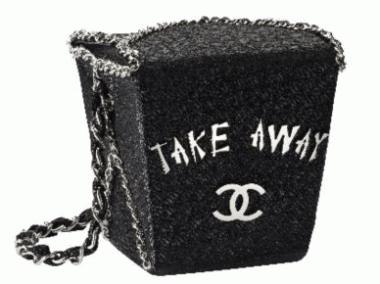New Boutiques In Shanghai Read Like A "Who's Who" Of Global Luxury Brands#

The Financial Times has posted a good article on Shanghai's ongoing luxury boom (covered extensively by Jing Daily), which has seen brands like Tiffany, Omega, Blancpain, Breguet, Louis Vuitton, and Ermenegildo Zegna opening lavish boutiques in the city since April alone. Although part of this was simply due to efforts by these brands to cash in on the millions of tourists who have poured into Shanghai for the Shanghai World Expo, major brands from around the world rightly see Shanghai as a city with long-term potential. While they'll have to contend with the popularity of Hong Kong shopping trips and online retail, these brands -- which see China as "the next Japan," since the country should indeed surpass Japan to become the world's largest luxury market within five years -- see heavy investment and strong brand presence in China as a must.
From the article:
With a hunger for extravagance born of decades of deprivation, China has risen so rapidly through the ranks of world luxury markets that Bain & Co, the consultants, estimated recently that China overtook the US last year to become the world’s second-largest luxury goods market behind Japan.
For, unlike rich people anywhere else, wealthy Chinese are virtually ignoring the global financial crisis. According to KPMG, which released a survey in May of Chinese consumers, 72 per cent say that the downturn had “little or no impact” on their luxury spending.
While luxury sales fell 8 per cent worldwide last year, they rose 12 per cent in China, according to KPMG.
“There wasn’t much of a financial crisis here in China,” says Stephen Urquhart, president of Omega, the Swiss watchmaker, which last month opened a new boutique in the romantically refurbished Swatch Art Peace Hotel on the Shanghai Bund.
The Swatch group has spent $100m renovating the building, which will reopen as a hotel this year with only seven rooms (and 18 ateliers provided free to selected artists).
Four Swatch-owned watch brands – Swatch, Omega, Breguet and Blancpain – last month opened own-brand boutiques in the gracious old hotel, with its coffered ceilings, newly gilted to evoke the elegance of a bygone age, and clean white gravel spread in patterns on the floor to evoke the future. Watches are to be had there for anything from $60 to more than $1m apiece.
“China has become the luxury market today,” says Mr Urquhart. “I was in [Tokyo’s] Ginza district the other day, and the only people with top-end brand shopping bags in their hands were Chinese,” he says. “It’s amazing!”
The article goes on to mention the special China-only items that have been designed by a number of top luxury brands:
Luxury groups report a welcome stream of souvenir sales, but the main goal was clearly to show respect for the rising might of Chinese luxury consumers.
Prada, which has never in 150 years of the World’s Fair history designed a product linked to an Expo, says it was “natural” to “give recognition to this high moment” in China.
It is showing an extensive line of Expo-inspired products, from shopping totes to key fobs. At its store on Shanghai’s luxury-glutted Nanjing West Road, an Expo tote perches atop a metre-high red and white spotted mushroom.
The window display is designed to capture the Expo motto, “Better City, Better Life”, with images of plastic greenery superimposed on Shanghai’s distinctive skyline.
“The Expo line sells really well,” says Helen Wu, a representative for Prada in Shanghai, gesturing at the range of Expo windbreakers, baseball caps, ballet flats and keychains that take pride of place in the Nanjing Road store.
“The price is reasonable,” she says, noting Rmb4,300 ($630) for a windbreaker and Rmb1,730 for a keychain is considered relatively inexpensive by the kind of super-rich buyers from all over China who come to Prada for a souvenir to take home from Expo.
Although this article covers similar ground to other articles that are perhaps wide-eyed in their bullishness (see our recent translation for Chinese views on the subject), it wraps up with a cogent point -- as Chinese consumers become increasingly sophisticated and brand-loyal in coming years, China will no longer become a "dumping ground" for merchandise that can't sell elsewhere. Rather, it's going to be critical to communicate to Chinese shoppers that the items for sale at boutiques in their hometown are the same as those in London or New York. While they still might not buy them -- put off as they may be by China's stiff luxury tax -- this will, theoretically, foster more solid brand loyalty that could pay off in the long term.
But Chinese consumers are increasingly matching their wealth with discrimination. Western brands that think they can dump last season’s products on the hapless Chinese will not survive long.
China has emerged from the financial crisis with a new self-confidence – some would say arrogance – about its place in the world, including the world of luxury.